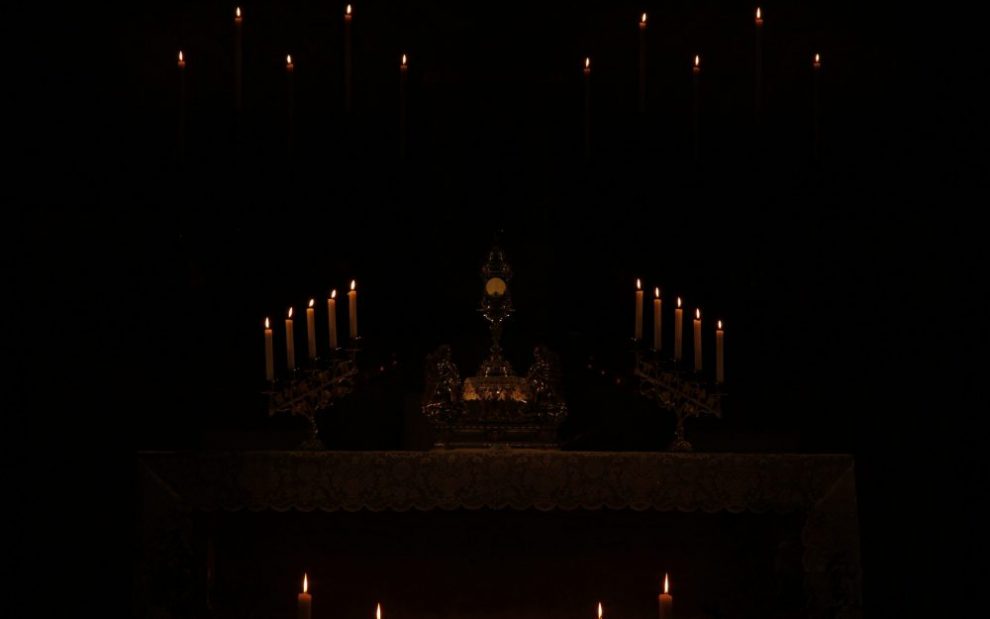It seems that a lot of parishes are starting to have adoration of the Blessed Sacrament, either as a regular practice or just on occasion.
Is this something new? Isn’t the celebration of the Mass enough?
Adoration of the Blessed Sacrament is not something new. It is a centuries-old practice rooted in an essential teaching of Catholic Christianity: Jesus Christ is truly and completely present in the Eucharist. Like many practices of our faith, however, adoration of the Blessed Sacrament developed gradually.
In the earliest years of Christianity, consecrated bread would be brought home from the celebration of the Eucharist to be given to those not able to be present at the liturgy because of illness. It was also to be consumed by the faithful during the week to keep them connected to the Eucharist and the community they celebrated with.
In about the fourth century monasteries began to reserve the Eucharist, and by the 11th century, reservation—still mainly for the sick and dying—was a regular feature of churches. While reverence was certainly given to Christ present in the sacrament, it was not yet customary to pray before the reserved sacrament.
In the 11th century the French monk Berengar of Tours began to teach that the bread and wine in the celebration of the Eucharist could not change physically into the body and blood of Jesus Christ. Pope Gregory VII demanded a retraction from Berengar saying that the body and blood of Christ were truly present in the Eucharist. This resulted in a refining of the church’s teaching on the real presence. In response, eucharistic devotion burst forth throughout Europe: processions, visits to the Blessed Sacrament, and other prayers focused on the reserved sacrament became part of Catholic life.
Around the same time, elevations of the bread and the wine were added to the eucharistic prayer at Mass. For some, the moment of seeing the consecrated host overshadowed the rest of the liturgy. Times of extended exposition of the Blessed Sacrament outside the Mass grew out of this action, and eventually a blessing with the exposed Eucharist, or benediction, developed.
The feast of Corpus Christi developed in the 13th and 14th centuries. Processions became traditional on this day, and other devotions, including adoration, gained popularity. Eucharistic Congresses, held since the late 19th century (most recently in Canada in 2008), continue to promote this devotion.
Since the Second Vatican Council, a great deal of attention has focused on the reform of the liturgy and a deepening of eucharistic theology and piety, but the practice of adoration remained in many places. Like the practice of the earliest Christians, adoration can keep us connected to the community’s celebration of the Eucharist.
This article appeared in the March 2011 issue of U.S. Catholic magazine (Vo. 76, No. 3, page 46).
Image: Unsplash/Francesco Alberti













Add comment